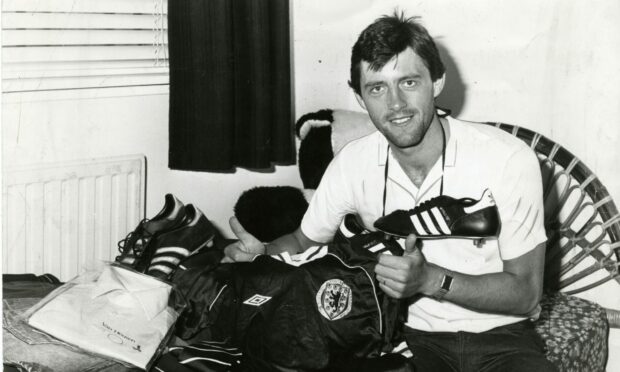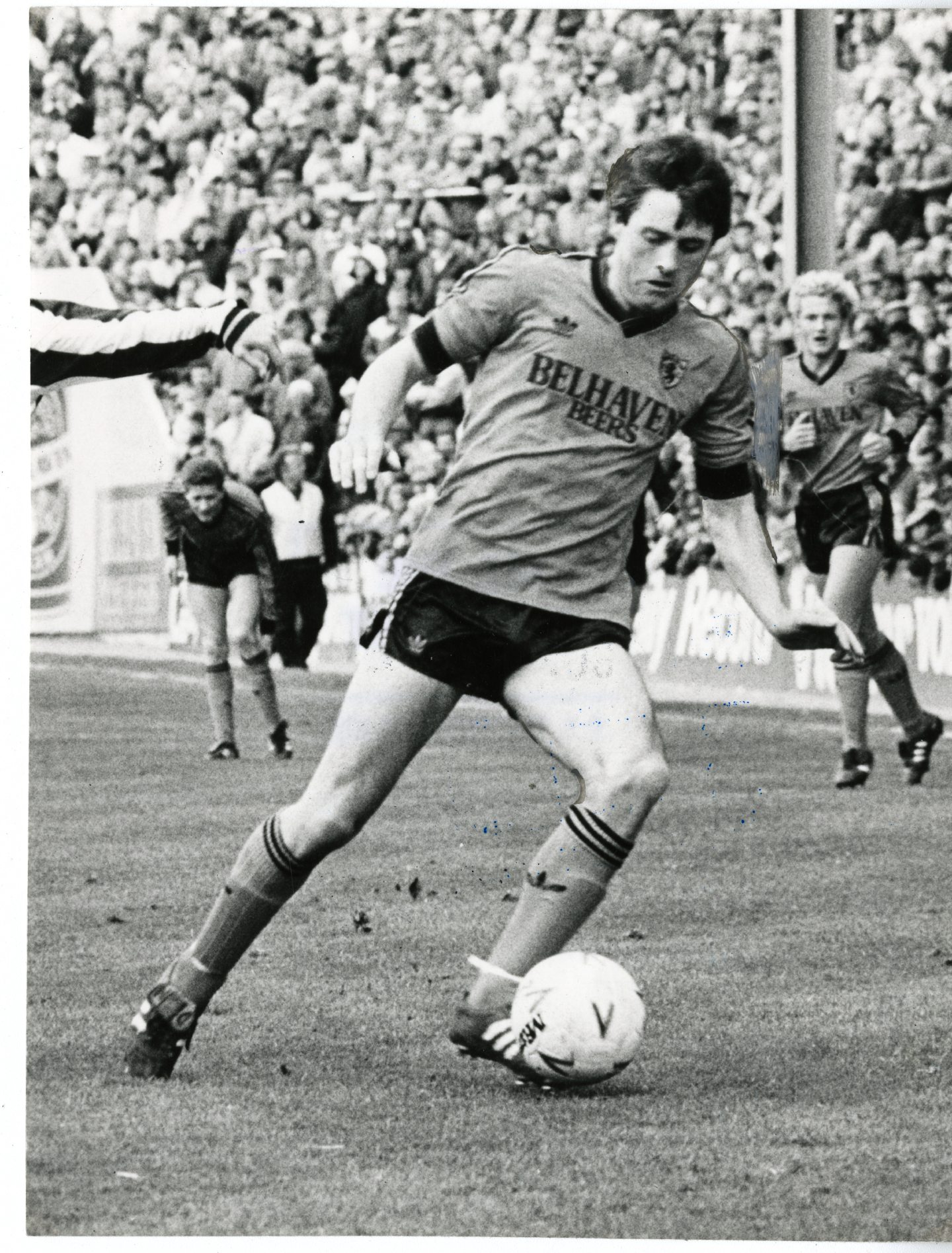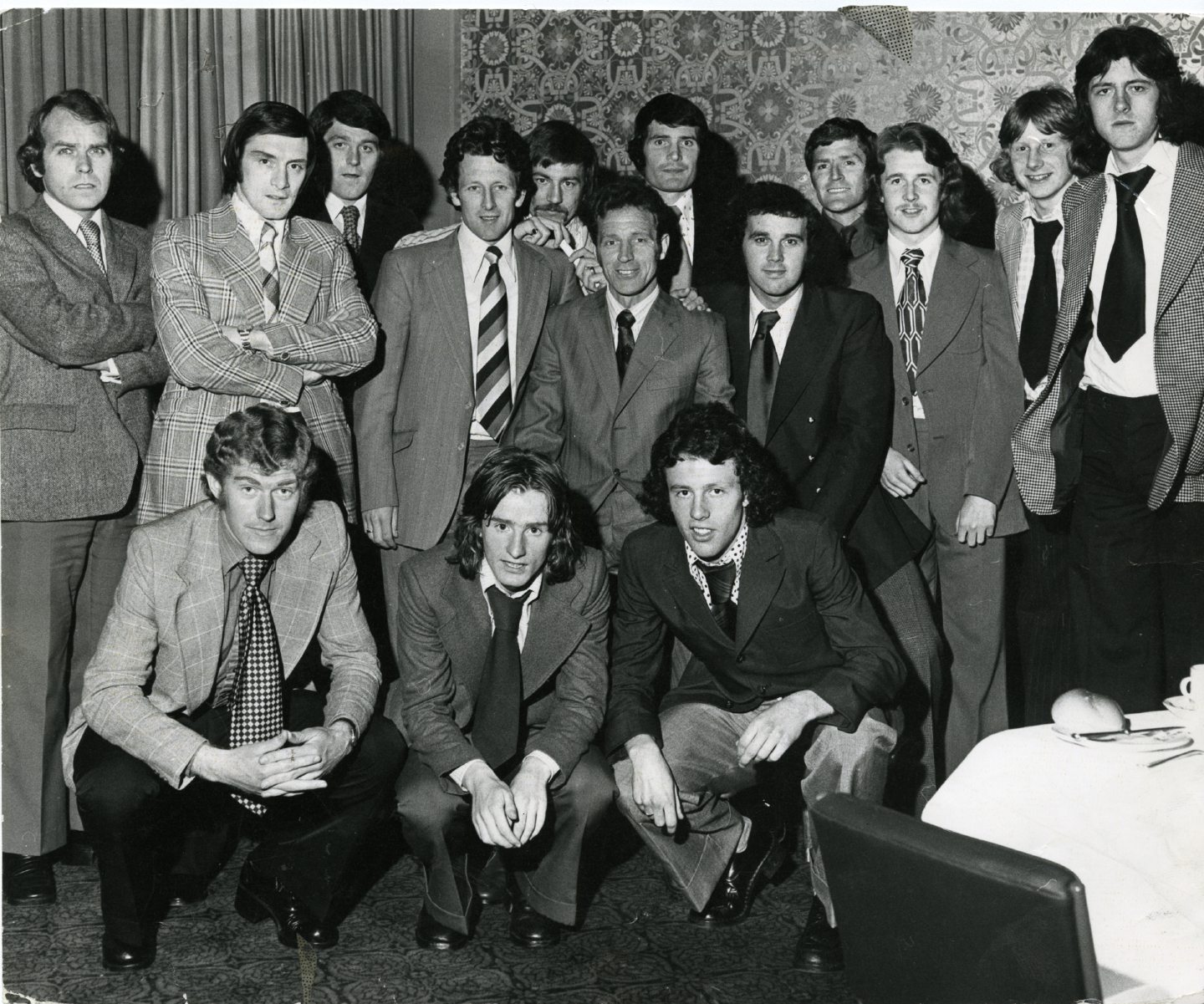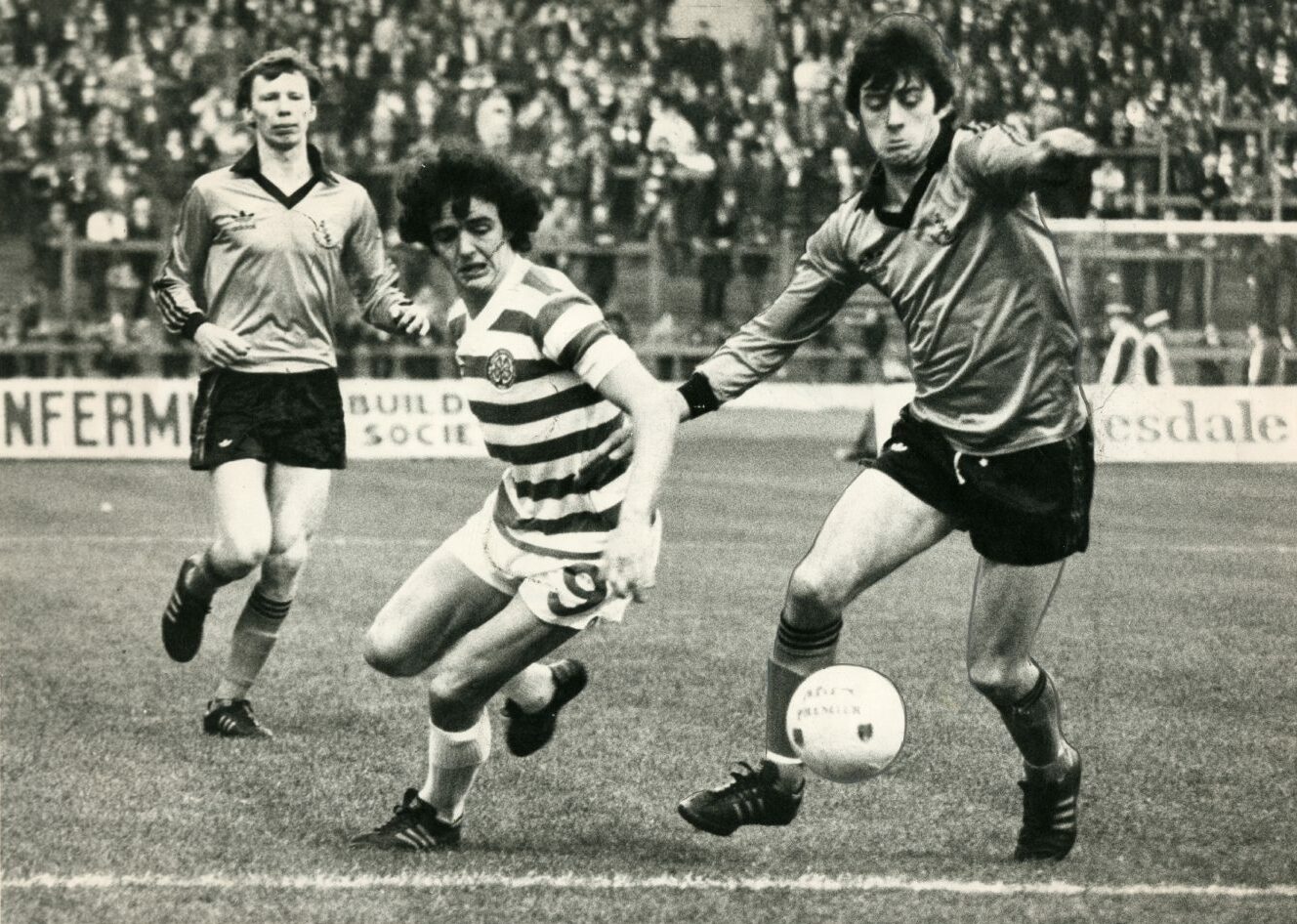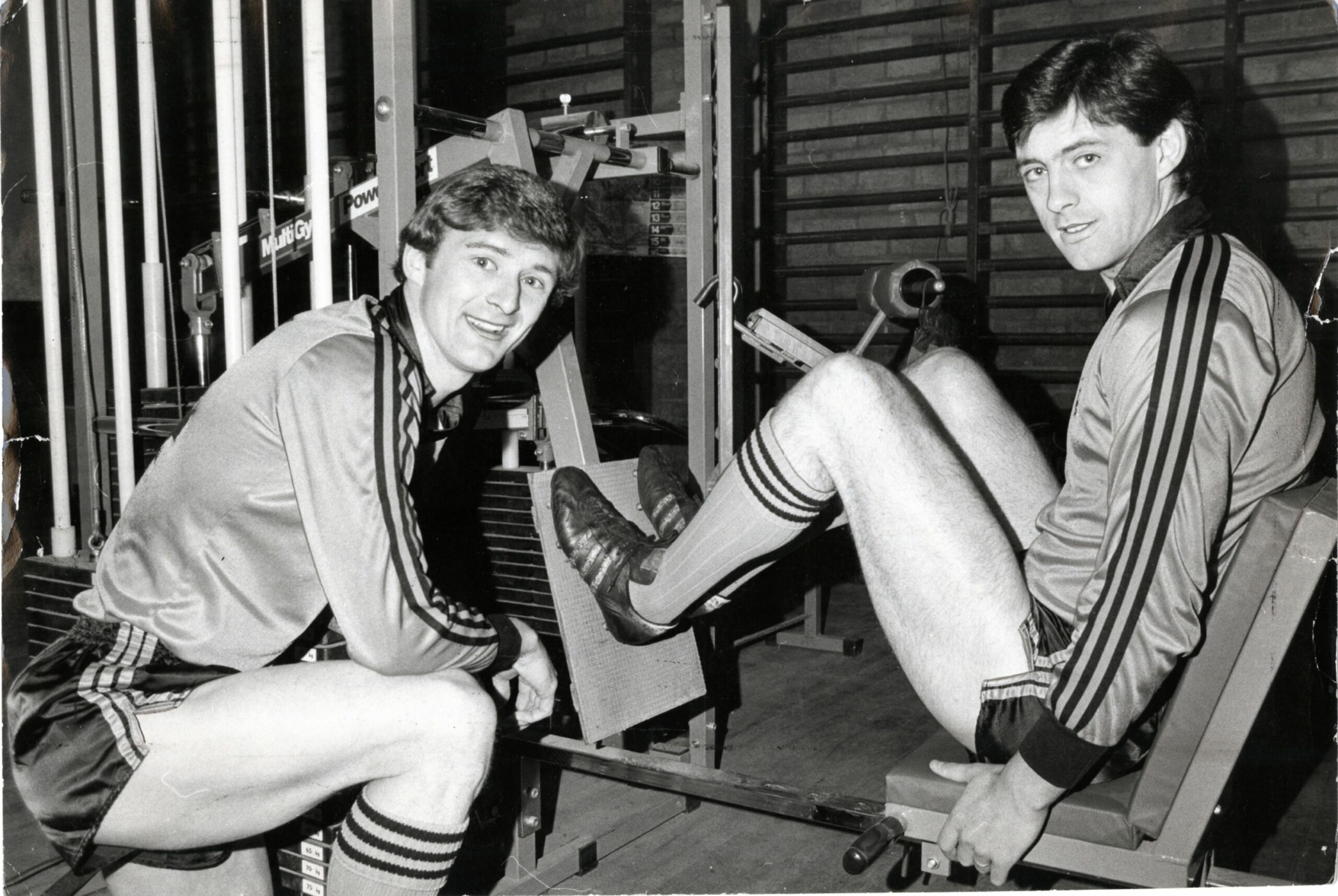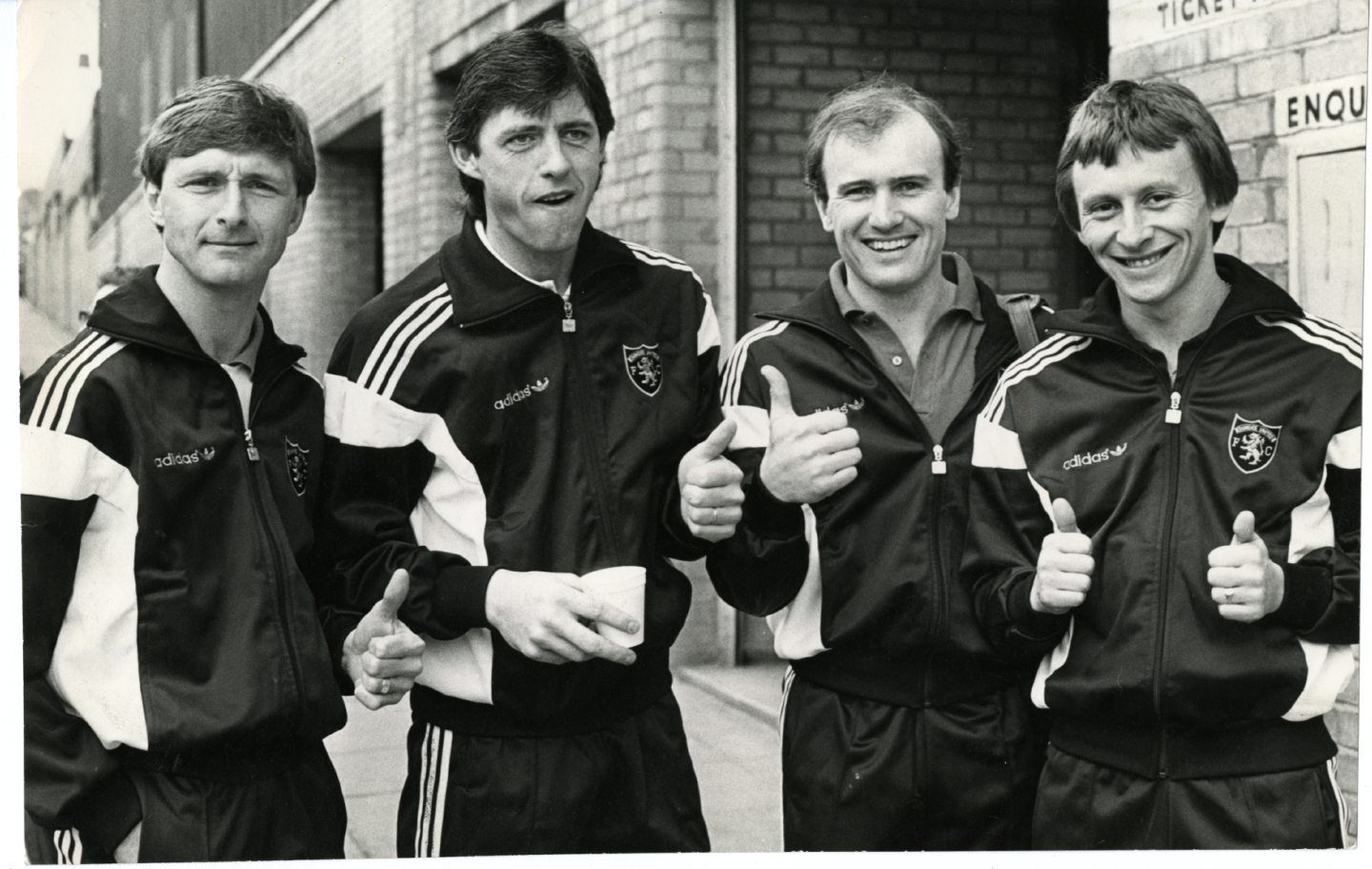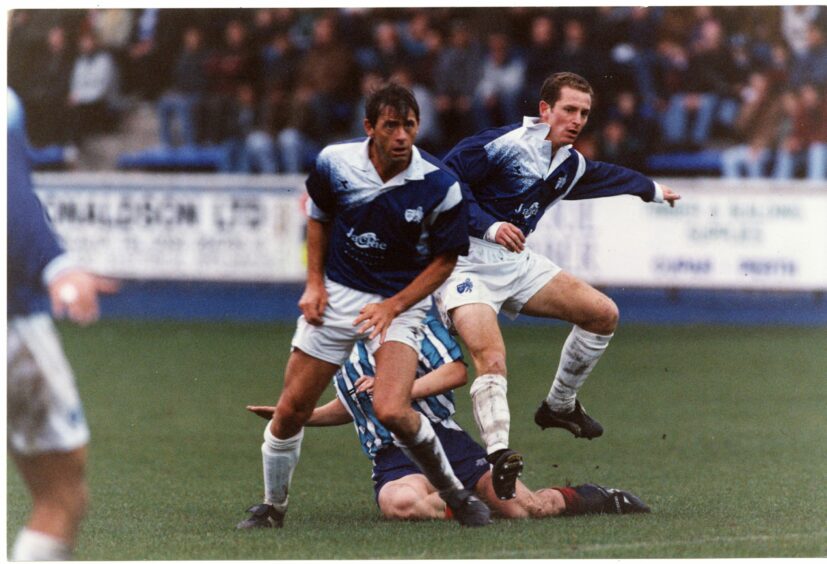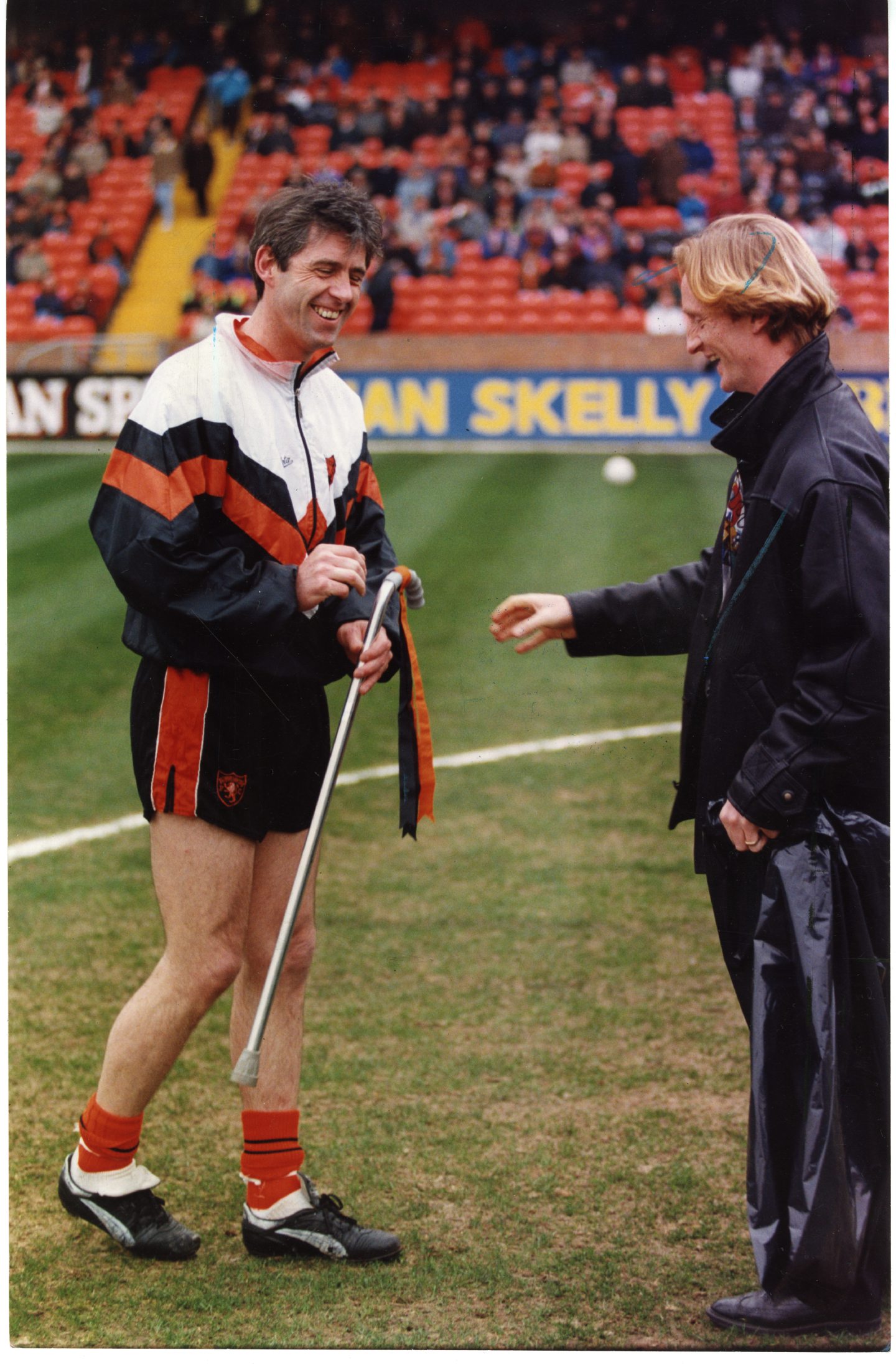David Narey signed for Dundee United aged 15 on January 6 1972 and so began a glorious 22 years at Tannadice.
A member of the Dundee United side that won the League Cup in 1979 and 1980, then the Premier League title in 1983, Narey was surrounded by a multitude of greats.
Ask any of them who was the best, however, and to a man they would answer it was Narey.
And his manager, Jim McLean, not a man to hand out praise easily, believed his central defender was world class.
McLean was just weeks into his tenure as Dundee United manager when he signed Narey ahead of Chelsea on schoolboy forms.
The mark of his game was grace and style.
As well as being an excellent centre-half defensively, Narey was also a supremely talented footballer, so much so he was also at home when used as a midfielder.
The St John’s High pupil played for St Columba’s BC under Alex Baird and John Letford before signing professionally for United in June 1973.
Narey made his debut on November 21 1973 at home to Falkirk in a 2-1 win.
The game kicked off at 3pm on a Wednesday due to the miners’ strike and was played in front of just 1,300 fans with Archie Knox scoring the 89th-minute winner.
United finished in eighth place in the First Division but reached the 1974 Scottish Cup final, coming up against Jock Stein’s all-conquering Celtic.
Celtic proved too strong in a 3-0 win.
Narey became a first-team regular in the 1974-75 season.
He became the first Tangerines player to win a full Scotland cap when he came on as substitute in a 3-1 win over Sweden at Hampden in 1977.
A Lion Rampant was displayed over Tannadice to celebrate the achievement.
Narey was later named in Ally MacLeod’s provisional 40-man Scotland squad for the 1978 World Cup in Argentina but failed to make the final 22.
That 1978 World Cup campaign ended in humiliation for Scotland.
On the domestic front, things were looking up for United, who finished third in the Premier Division in 1978-79 and were ready to contest top spot.
Narey formed a formidable defensive partnership with United skipper Paul Hegarty and the youngsters nurtured by McLean more or less comprised the team.
He won back-to-back League Cups with United in 1979 and 1980 and was part of Jock Stein’s Scotland squad which qualified for the 1982 World Cup in Spain.
Narey scored a wonder goal for Scotland to put them ahead against Brazil in Seville during the 4-1 defeat – made all the more memorable for BBC pundit Jimmy Hill referring to it as a ‘toe poke’.
The Tartan Army’s feelings were clear as a chorus of anger greeted Hill’s errant dismissal of Narey’s wonder strike.
Not that it bothered Narey.
He was imperturbable both on and off the park.
Typically, the big Dundee United defender couldn’t care less how Hill described his only goal for Scotland in 35 appearances for his country.
Narey was more worked up at finding his wife had taped an edition of Coronation Street over a recording of the game before he had a chance to see his goal again when he got home from Spain.
Narey should have won more caps but this was an era when Scotland could also call on top talent like Aberdeen central defensive duo Willie Miller and Alex McLeish, Liverpool’s Alan Hansen and Narey’s team-mate Paul Hegarty.
Narey returned from the 1982 World Cup and was part of the United side that won the Premier Division title in 1983 and became Tannadice legends.
The domestic silverware was accompanied by unimaginable success on the continent, which included reaching the semi-final of the European Cup in 1984.
United’s greatest result under McLean was probably beating Barcelona 2-0 in the Nou Camp during the run to the 1987 Uefa Cup final.
IFK Gothenburg proved a step too far in the final, as they won the tie 2-1 overall at Tannadice, after a 1-1 draw in Sweden.
Narey collected three winners’ medals in his time at the club and that could easily have been many more had it not been for United’s dreadful luck in cup finals.
In 1992 he received an MBE for his services to football, an honour few Scottish footballers have received.
In a Tannadice career that stretched from the ’70s to 1994, he played an astonishing 872 competitive games and scored 36 goals in the process.
Raith Rovers… and more trophies
Narey, modest to a fault and famously publicity shy, left United for First Division Raith Rovers, where he played a major role in one of the domestic game’s greatest shocks – the Fifer’s League Cup final success over Celtic at Ibrox the following year.
Jimmy Nicholl’s mixture of seasoned pros and promising youngsters edged out Premier League Celtic in a sensational penalty shoot-out following a 2-2 draw.
Narey was an absolute stand-out as he picked up his third League Cup winner’s medal aged 38, to go with the two he earned with Dundee United in 1979 and 1980.
“I had left United after such a long time but I still thought I was capable of playing at a high level,” he said.
“I also had faith in the team and thought we could win because that season at Raith was a great one.
“We beat Kilmarnock, who were in the Premier League, Ross County, St Johnstone and Airdrie on the way to the final and went on to clinch the Division One championship later on.”
Narey retired after winning the league with Raith and in January 2008 he was one of the first players inducted into the Dundee United Hall of Fame.
Narey was inducted into the Scottish Football Hall of Fame in 2010 and still holds the record for the most appearances for Dundee United.
More like this:
Frank Kopel and the Hogmanay call from Jim McLean which started a Dundee United love affair
Dundee United legend Jim McLean: A football life in pictures
Our special comic book to celebrate Sir Alex Ferguson’s 80th birthday
